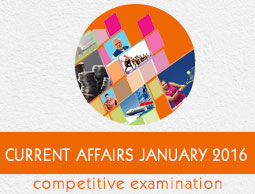
- Appointments
- Awards
- Deaths
- Economic
- Environment
- Banking
- Important Days
- International
- Miscellaneous
- National
- New Books
- Persons in NEWS
- Places in NEWS
- Regional
- Reports
- Resignations
- Sports
- Technology
- Various Committees
- January 2016 - Exams Resources
- Current Affairs - Quiz
- Current Affairs - Test
- Current Affairs - PDF
Current Affairs Jan 2016 - Technology
News 1 - Four new Elements added by IUPAC completes the Seventh row of the Periodic Table.
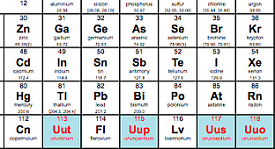
01-Jan − The International Union of Pure and Applied Chemistry (IUPAC) announced discovery and assignment of elements with atomic numbers 113, 115, 117 and 118, which are synthetic in nature. This now completes the 7th row of the periodic table of the elements. Post 2011, these elements are the first to be added to the periodic table when elements 114 (Flerovium, FI) and 116 (Livermorium, LV) were added. These elements were discovered by scientists belonging to the USA, Russian and Japan.
News 2 - Googles Project Tango to be used in Lenovos upcoming smartphones.

07-Jan − Lenovo has partnered with Google in order to use Googles project Tango in its upcoming smartphones. As a result, the new smartphone will be able to see
and map out surroundings without using GPS or any other external signals. Googles Project Tango gives navigation ability to a mobile device without using GPS or any other external signals.
News 3 - CIRB becomes India's second center to produce a cloned buffalo.
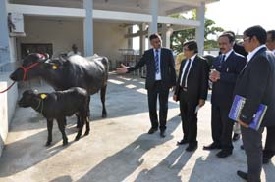
10-Jan − Scientists of the Central Institute for Research on Buffaloes (CIRB) claimed to have successfully produced a cloned buffalo offspring, CIRB Gaurav. With this achievement, CIRB became worlds third and Indias second institute to produce a cloned buffalo. National Dairy Research Institute in Karnal was the first institute to produce a cloned calf in India.
News 4 - Bill Gates along with Illumina & Jeff Bezos launched startup GRAIL to develop blood-based cancer tests.

10-Jan − Illumina, which is one of the worlds largest DNA sequencing company, announced the launch of the startup named GRAIL to develop blood-based cancer tests. The company was launched in association with Bill Gates and Amazon CEO Jeff Bezos.
News 5 - China begins the test of first Tibetan language search engine: Cloud Tibet.

11-Jan − China announced that it has begun testing the countrys first Tibet language search engine named Cloud Tibet. The search engine will be released by mid-2016. Once released, it will serve around 1.2 million users. This project was started in April, 2013. A team of close to 150 people from a Tibetan language research center in Hainan Tibetan Autonomous Prefecture, which is in the Qinghai Province, Northwest China, led the project.
News 6 - Indian-American professor develops Galacto-Seismic method to detect Dark Matter.
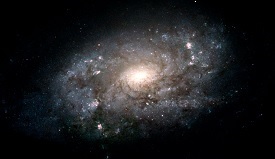
11-Jan − Indian-American Sukanya Chakrabarti, along with her team of international scientists, devised a new method, galactoseismology. This new technology helps to detect dwarf galaxies dominated by dark matter. This dark matter is a kind of hypothetical matter that makes up about 85 percent of the mass of this universe. They are one of the greatest mysteries in modern astrophysics.
News 7 - NASA launched SpaceX Falcon 9 Rocket with Jason-3 Ocean-monitoring satellite.
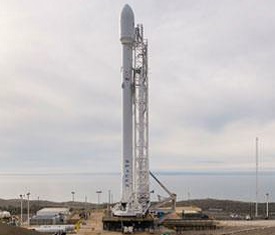
17-Jan − NASA has launched the SpaceX Falcon 9 Rocket from Californias Vandenberg Air Force Base. It carried along with it the ocean monitoring satellite Jason-3 on board and successfully inserted it in the desired orbit. The Jason-3 satellite, the fourth mission in the US-European series, will be used to study the topography of the ocean floor in order to understand effects of climate change or human-induced changes on the ocean.
News 8 - Second largest black hole in the Milky Way discovered by Japanese astronomers.

17-Jan − A team of Japanese astronomers discovered a mysterious gas cloud named CO-0.40-0.22
just 200 light years away from the center of the Milky Way and this may be the first detection of an intermediate mass black hole (IMBH). Astronomer Tomoharu Oka at Keio University in Japan led the research, which has been published in the Astrophysical Journal Letters.
News 9 - ISRO and Kuwait Institute of Scientific Research Inked MoU on cooperation in the area of outer space.
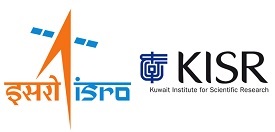
20-Jan − The Indian Space Research Organization (ISRO) inked a Memorandum of Understanding (MoU) with Kuwait Institute of Scientific Research (KISR) on cooperation in the exploration and use of outer space for peaceful purposes. The MoU will enable pursuing potential interest areas in both cooperative and commercial mode, namely −
Use of data from Indian Remote Sensing (IRS) satellites by KISR for initiating a few research and application projects.
Training and
Building and launching of remote sensing and communication satellites on commercial terms.
News 10 - PSLV-C31 Successfully Launches India's Fifth Navigation Satellite IRNSS-1E.
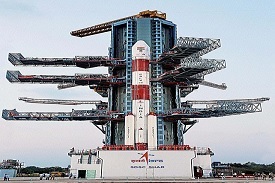
20-Jan − ISRO's Polar Satellite Launch Vehicle, PSLV-C31, successfully launched the 1425 kg IRNSS-1E, the fifth satellite in the Indian Regional Navigation Satellite System (IRNSS) from Satish Dhawan Space Centre, Sriharikota. It was the 32nd consecutive successful mission of PSLV and the 11th in its 'XL' configuration. IRNSS is an independent regional navigation satellite system designed to provide position information in the Indian region and 1500 kms around the Indian mainland. IRNSS would provide two types of services, namely, Standard Positioning Services (SPS) - provided to all users - and Restricted Services (RS), provided to authorized users.
News 11 - Scientists have discovered a lonely planet 2MASS J2126 and its distant star TYC 9486-927-1.
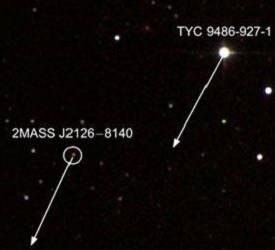
26-Jan − A team of scientists from UK, USA and Australia have found a lonely planet designated as 2MASS J2126 in a huge orbit around its star TYC 9486-927-1. The discovery was published in Monthly Notices of the Royal Astronomical Society. This planet 2MASS J2126 is about 1 trillion (1 million million) kilometers from its parent star, or about 7000 times the distance from the Earth to the Sun. It takes roughly 900000 years for this planet to complete one revolution of the parent star. The mass of 2MASS J2126 would be between 11.6 to 15 times the mass of Jupiter.
News 12 - Arianespace Launches Intelsat 29e to Orbit.
27-Jan − The worlds leading satellite service provider, Intelsat announced that Intelsat 29e was successfully launched from French Guiana aboard an Ariane 5 vehicle. This Intelsat 29e is the first of the Intelsat EpicNG high throughput satellites. It will help provide customers with superior connections at a lower cost.